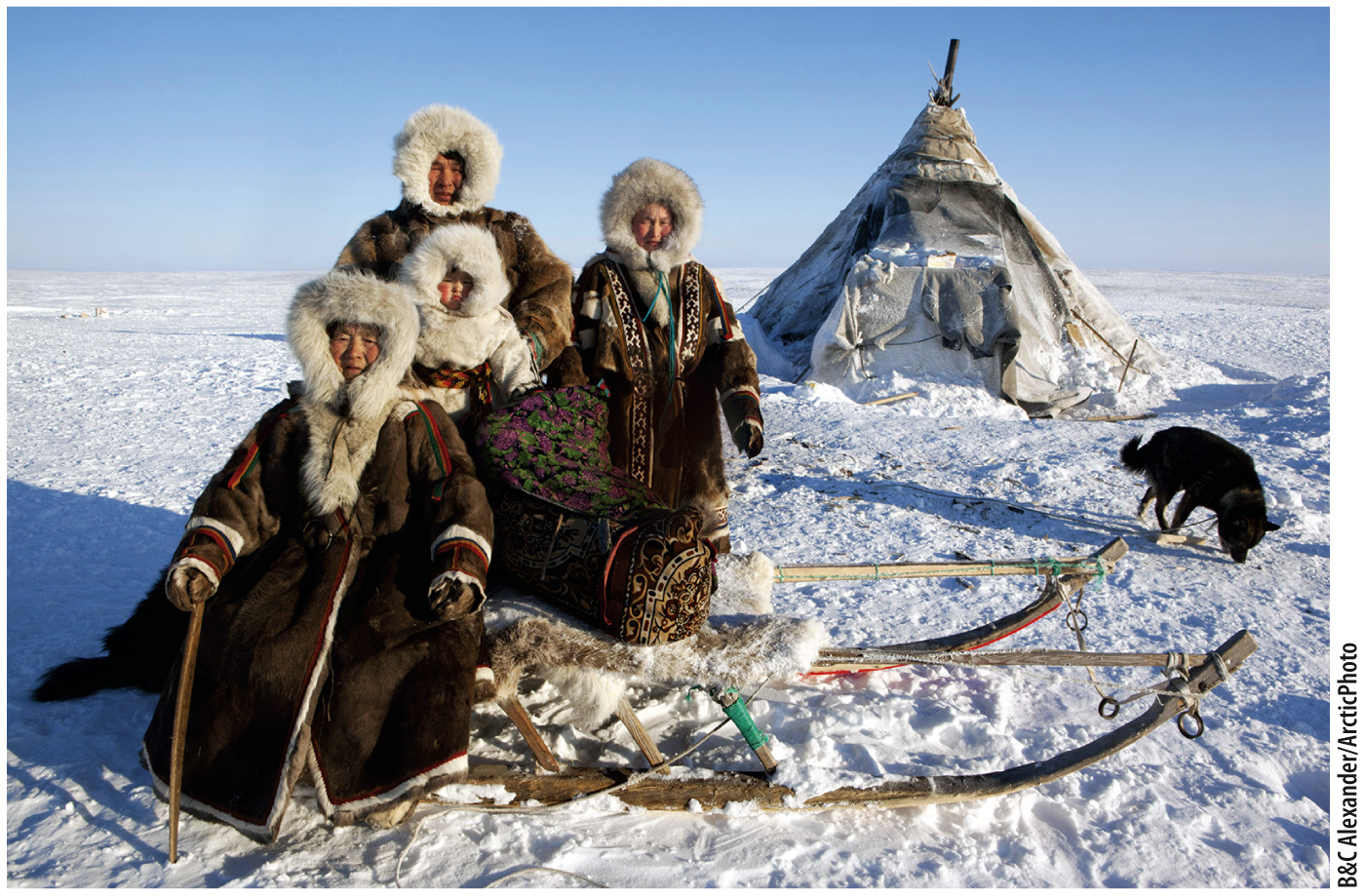Culture changes rapidly.
Culture is generally defined as a body of learned behavior that is socially transmitted among individuals and passed down from one generation to the next. Culture has permitted us in part to transcend our biological limits. To take a simple example, clothing and ingeniously constructed shelters have enabled us to live in extraordinarily inhospitable parts of the planet, like the Arctic (Fig. 24.17). The capacity to innovate coupled with the ability to transmit culture is the key to the success of humans.

Culture, of course, changes over time. In many ways, cultural change is responsible for our species’ extraordinary achievements. Genetic evolution is slow because it involves mutation followed by changes in allele frequencies that take place over many generations. Cultural change, on the other hand, can occur much more rapidly. Ten years ago, nobody had heard of smartphones, but today, millions of people own them. Or think of the speed at which a change in clothing style—
Despite this clear contrast between biological evolution and cultural change, we should not necessarily think of the two processes as independent of each other. Sometimes cultural change drives biological evolution.
A good example of the interaction between cultural change and biological evolution is the evolution of lactose tolerance in populations for which domesticated animals became an important source of dairy product. Most humans are lactose intolerant. Lactose, a sugar, is a major component of mammalian milk, including human breast milk. We have an enzyme, lactase, that breaks down lactose in the gut, but, typically, the enzyme is produced only in the first years of life, when we are breast-
Archaeological and genetic analyses indicate that cattle were domesticated probably three separate times in the past 10,000 years, in three separate places: in the Middle East, in East Africa, and in the Indus Valley. In at least two of these cases, there has been subsequent human biological evolution in favor of lactose tolerance, that is, continued lactase production throughout life. Analysis of the gene region involved in switching lactase production on and off has revealed mutations in European lactose-